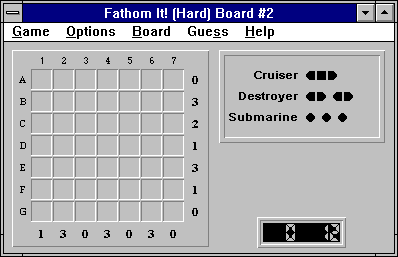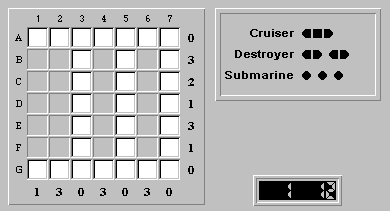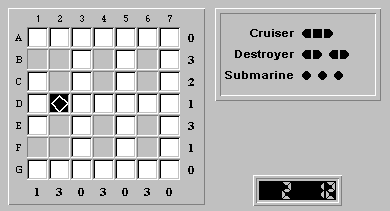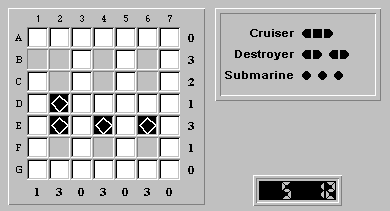
Here's the initial board:

Finalizing any obvious water square (e.g. (A,1) as water) gives us the following:

Notice that columns 4 and 6 are symmetrical, both having a tally of three, and being surrounded by water squares.
We can deduce immediately that the solitary cruiser cannot be placed in either column 4 or 6. If it were, we could switch the columns around and have a different solution (because there is only one cruiser to place). This is not possible, because Fathom It! boards are guaranteed to have a single, unique solution.
Therefore, the cruiser must be placed in column 2:

Row E can be filled in with ship segments:

Looking at column 2, it is obvious that the cruiser that belongs there cannot extend to square (B,2). Therefore (B,2) is water, which means that all other unknown squares along row B are ship segments:

Filling in row C followed by row F gives the solution:

On 25 February 2005, Shmuel Siegel
submitted analysis of this board that uses the symmetrical observation
used above, but does not need the uniqueness principle:
|